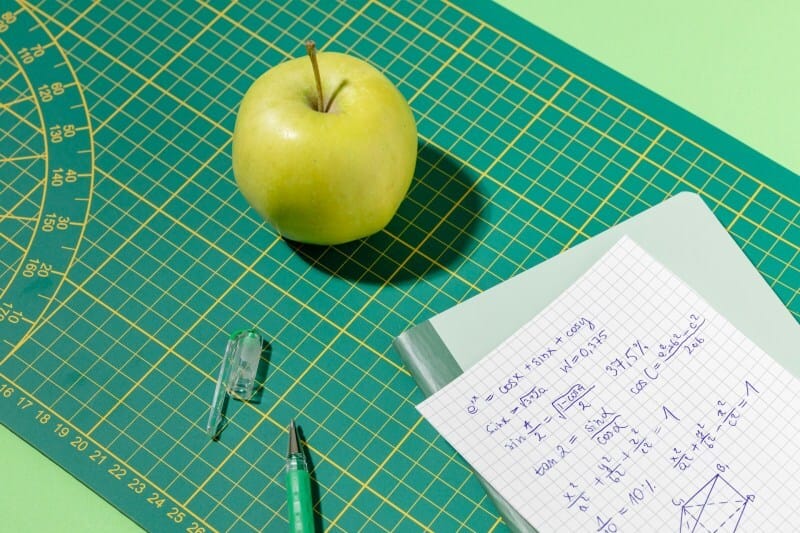Physics often seems like one of the most complicated college subjects. It asks students to understand things like forces, motion, energy, and thousands of invisible concepts. Youth who ask how to solve physics problems find them hard because it mixes theory with a lot of math. It also needs critical thinking skills.
Physics remains an important part of university programs. Engineers, doctors, chemists, and other professions need a good grasp of this science. Still, a large number of students struggle with it. A five-year study conducted by the American Institute of Physics (AIP) from 2018 to 2023 surveyed 3,917 students enrolled in introductory physics courses. Out of students who initially expressed interest in majoring in physics approximately 38% persisted to graduate with a degree in this study.
This article will guide readers on how to tackle these tasks effectively. Step-by-step support can make even hard assignments manageable.

1. Understand The Question and Spot the Issue
Current students find high school physics problems easier. Once they move to college, the tasks become longer and more confusing. Every good solution starts with reading the problem carefully. Most mistakes happen because students rush through the words. Before solving anything, you need to understand what the task asks. Look for key facts: What topic does it cover? What information do you know? What is missing?
For example, if a question mentions speed and time, it likely asks about distance. If it talks about force and mass, it probably connects to acceleration. Spotting these clues helps focus your work.

Here is a quick way to approach a physics math problems task:
Read the full problem twice. Make sure you know every fact given.
Underline or highlight important numbers and terms.
Ask yourself: What do I need to find? What formulas match this topic?
Think: Are there hidden steps? Do I need to find one value before solving another?
Here is a short example. “A car moves at 60 km/h for 2 hours. How far does it travel?” You spot “speed” and “time”. You know the distance formula: distance = speed × time.
In another case: “A ball drops from a height. How long until it hits the ground?” Now the key topics are free fall and gravity.
The majority of mistakes in studying are caused by inattention or missed characters. It’s easy to fix. Understand what the question needs to save time and reduce errors. Students who practice spotting the main point solve faster and with fewer mistakes.

2. Use Edubrain to Solve Problems with AI
In the past, people used libraries and the help of adults and peers to deal with complicated things in education. Now it’s become easier as we can use online tools from the comfort of our home. They are easy to access and mostly free. With the advent of AI students’ lives simplified a lot. People can get help from the smart AI assistant at Edubrain.ai. This portal uses the AI physics homework solver to guide users through homework. They help with different subjects as well. Students who struggle can use it to build better skills and solve tasks with confidence.
Edubrain’s Problem Solver shows full solutions. It breaks down complex tasks into clear steps. It teaches users how to connect theory with numbers.
Here is how students can use it for homework:
Visit Edubrain.ai.
Type your problem into the main search bar or add a photo. The program can recognize text from a textbook.
Choose the topic or subject (physics).
Press “Solve.”
Read the step-by-step solution that appears.
The website supports a dozen areas from engineering to architecture and math. It covers beginner to advanced levels. It also highlights important formulas and explains why each step matters. Students using Edubrain can practice with solved examples. They can also ask for tips from real people when stuck. It helps users think by themselves, not just memorize facts.

3. Draw a Simple Sketch for Clarity
A quick diagram helps students see the real situation behind a wordy task. Physics equations may hide important details in long sentences. A detailed picture brings those facts into view.
Imagine a car moving uphill. A simple sketch can show the slope, the direction of motion, and the forces acting on the car. You would draw arrows for gravity, friction, and applied force. Without the picture, these forces stay vague.
Even a basic drawing can help with tasks involving motion, forces, and energy. In problems with more than one object, a picture makes relationships obvious.
Students should keep sketches clean and not overload them with extra information. The goal is to create a “cheat sheet” that fits the task. It shows all necessary elements in one glance.
When you draw it can also reveal missing data. For instance, if a force arrow is missing, the student knows something is wrong. They can go back to the text and find what was overlooked. Diagrams strengthen problem-solving skills. In exams, it saves precious time. Sketch first, solve second.

4. Choose the Correct Formula and Check Units
Issues in that science comes down to using the right equation. The wrong formula leads to wrong answers. Students must carefully match the topic to the correct rule.
Say you need to find speed. You must use speed = distance / time. But if the problem talks about forces, you must think of Newton’s laws instead. Rushing this step causes errors.
Another common mistake is mixing up units. A distance in kilometers and time in seconds need a conversion. Otherwise, the answer will make no sense. If you are stuck with a decision, try to use different units and logic. Even the most presentable books and professors may be wrong. Check if there are no errors in the task.
An example: “A car moves 1200 meters in 60 seconds. Find its speed.” Use speed = distance/time. Units already match (meters and seconds). The answer is 20 meters per second.
Another example: “A force of 30 newtons moves an object 10 meters.” If the task asks for work done, use work = force × distance.

5. Use Additional Tools to Better Understand Physics
Use all resources you can reach at once. They may present the most up to date information and gamification of the process to make the studies less boring. Different tools fit different needs. Some explain concepts. Others solveequations faster.
Physics Calculator
This is a must-have for solving fast and accurately. Websites like CalculatorSoup.com offer free calculators for force, energy, work, and acceleration. Users just enter values, and the site shows full steps. This helps students learn the real method, not just the final number. CalculatorSoup is completely free and updates its database often to match new standards.
Khan Academy
Khan Academy gives free, high-quality lessons on physics topics. It offers over 500 videos just for physics alone. Lessons cover motion, energy, waves, and magnetism. It also has quizzes and unit tests. Students can create free accounts and track their learning progress over time.
PhET Simulations
PhET Simulations, built by the University of Colorado, offers more than 150 interactive science simulations. Physics makes up a large part of this collection. The website lets students change variables and watch results in real time. Most simulations are free, but a few advanced ones need a small fee, around $5. PhET is great for those who need a hands-on style of learning.
Wolfram Alpha
The tool acts like a smart tutor. It solves complex equations and explains each step clearly. Basic use is free, but premium access costs about $5.49 per month. The paid version gives step-by-step answers, deeper explanations, and downloadable worksheets. It is perfect for checking homework answers and studying smarter.
Brilliant.org App
It focuses on building real understanding through problem-solving. Their physics courses mix short lessons with exercises. A monthly subscription starts at $24.99, but students can try a free version first. Brilliant adds new physics problems each week. It covers mechanics, electricity, magnetism, and waves in deep, interactive ways.
Use more than one tool to keep studying fresh. It covers gaps that one resource might miss. With the right mix, even complex tasks become easier to handle.
Final Thoughts
This subject has attracted new scientists for centuries. Some beginner physicians don’t recognize how complicated studies can be. Many give up, but the core of students are constantly looking for problem resolution. They use different tools presented in this article and can adjust various strategies from time management to external support. It’s clear that people who approach with effort can achieve success in any study. Physics is the case.
The post 5 Smart Hacks To Help Solve Physics Problems appeared first on Moss and Fog.
